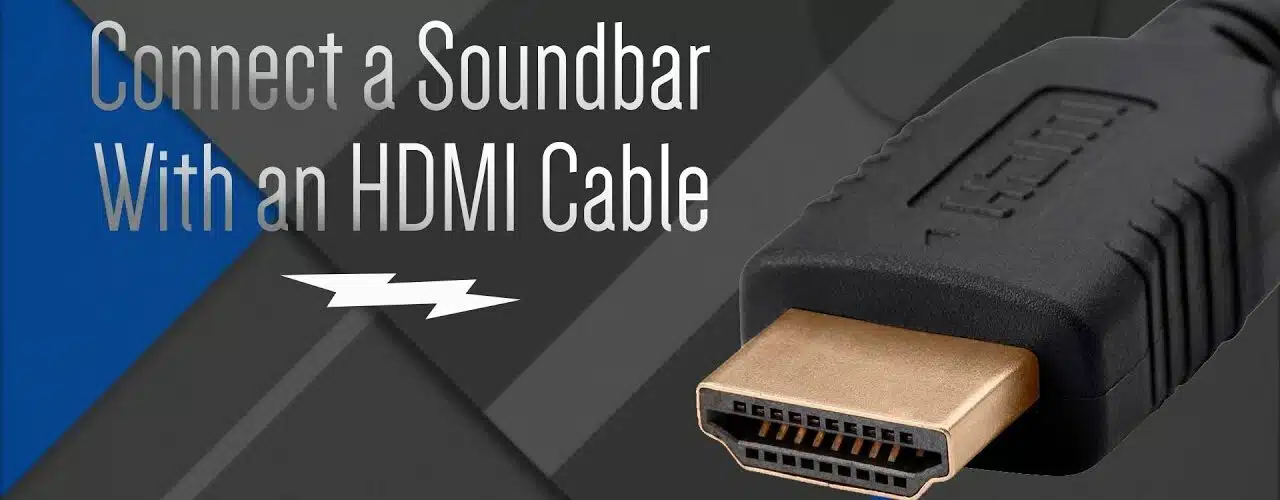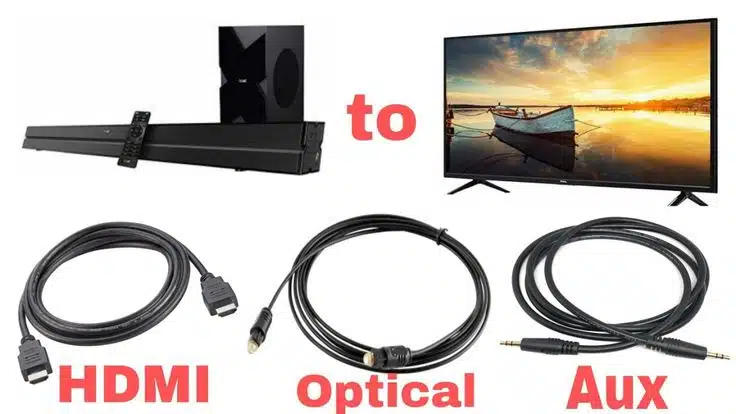Table of Contents
How To Connect HDMI Cable To TV And Sound BAR?
How To Connect HDMI Cable To TV And Sound BAR? A soundbar is a great way to boost your television’s audio quality. It connects via an optical cable to your TV and provides high-quality digital audio. You will need to make sure that the audio settings on your TV are set correctly.
The internal speakers on most TVs don’t do their vivid images justice, so connecting a soundbar is a popular upgrade. But how do you go about doing it?
HDMI stands for High-Definition Multimedia Interface:
HDMI cables are a high-quality audiovisual connector that transmits crystal-clear audio and video signals seamlessly. It eliminates the need for multiple wires, thereby simplifying cable management and improving user experience. It also supports 3D video formats & 4K@30Hz resolution to ensure exceptional picture quality and clarity.
The HDMI standard is based on a digital serial bus, which uses the same basic signals as DVI (Digital Visual Interface). Its signal transmission rate is higher than that of analog audio and video signals, reducing the likelihood of interference or degradation. The can be found on most modern devices that support a digital output.
It is backward compatible with the DVI connector and supports HDCP (High-Bandwidth Digital Content Protection) encryption that averts unauthorized copying of digital content during transmission. It also supports Consumer Electronics Control (CEC) which allows you to control multiple HDMI-connected devices with a single remote.
HDMI is available in a variety of colors, lengths, and materials to accommodate different applications. Its angled connectors enable it to fit snugly in tight spaces and areas with frequent bending. It is also equipped with a locking tab that prevents accidental disconnection or mishandling of the connectors. Its built-in signal-boosting technology enables the cable to run longer cables without loss of data or image quality. This feature makes it a popular choice for home theater systems.
ARC stands for Audio Return Channel:
The HDMI ARC (Audio Return Channel) feature makes it possible to route audio signals over one cable between your TV and soundbar, removing the need for an additional optical or analog audio connection. This is a great way to simplify your home theater setup and improve sound quality.
ARC is all devices HDMI 1.4 and later. The newer HDMI 2.1 specification has a more advanced feature called HDMI eARC, which is more powerful and can support the latest immersive audio formats such as Dolby Atmos and DTS: X.
To use ARC, both your TV and soundbar must support it. To for this look for the ARC port on your TV and make sure that it is in your TV’s system or audio settings. The exact process will vary by TV model, so check your TV’s manual for specific instructions on how to enable the ARC feature.
ARC is also useful for people with TVs that have limited HDMI inputs. With ARC, you can feed all your various sources (Blu-ray player, streaming media apps, etc.) into the ARC-supported HDMI ports on your TV and send multichannel audio output to an ARC-compatible soundbar.
CEC stands for Consumer Electronics Control:
When you pair an HDMI ARC or eARC-equipped TV with a compatible soundbar, you can enable CEC to simplify home theater setups. When enabled, your TV and soundbar can communicate with each other, allowing you to control both from the same remote without having to switch inputs or search for the right source.
CEC-compatible devices can transmit deck control commands—play, stop, rewind, and more—via HDMI. This allows you to use your TV remote to control your other playback devices, like Blu-ray players and camcorders. You can also control your HDMI-connected streaming devices, such as a media streamer or smart TV.
Another benefit of CEC is One Touch Play, which lets you power up your TV and select a playback device with just one button. You can enable this feature on your TV’s Settings menu or in a special System or Advanced submenu. Some TVs have separate ARC and CEC settings, while others combine them into a single setting that turns both ARC and CEC on or off at the same time.
If you prefer not to use HDMI for audio output, you can connect an optical digital audio cable (no more than 5 meters long) from your TV’s Optical Out port to the soundbar’s Optical In port. Before you start using the connection, make sure that both devices are powered on and that they are both set to their preferred audio output.
Optical stands for Optical Digital Audio:
The optical digital audio (ODA) port is a type of input/output port that uses light signals to transmit digital data. Also less susceptible to interference from electromagnetic fields and radio waves. making them an excellent choice for home entertainment systems.
This type of port is also called a Toslink or Sony LMD-AL11 and it can be found on many modern. These include Blu-ray players, televisions, and AV receivers. It can also be used to connect a computer to an audio output device, such as speakers or headphones. Optical cables have squared or cornered connectors and are made of glass, silica, or plastic. They are also thinner than coaxial digital audio cables. take as long to twist or bend.
If you have a newer TV with HDMI ARC, you should use this connection to get the best sound quality. It offers better sound fidelity than optical connections and supports newer audio formats. It also has CEC, which allows you to control your TV and audio equipment with the same remote controller. In addition, HDMI ARC is compatible with PCM, which allows you to listen to higher-quality music and movies.






Add comment